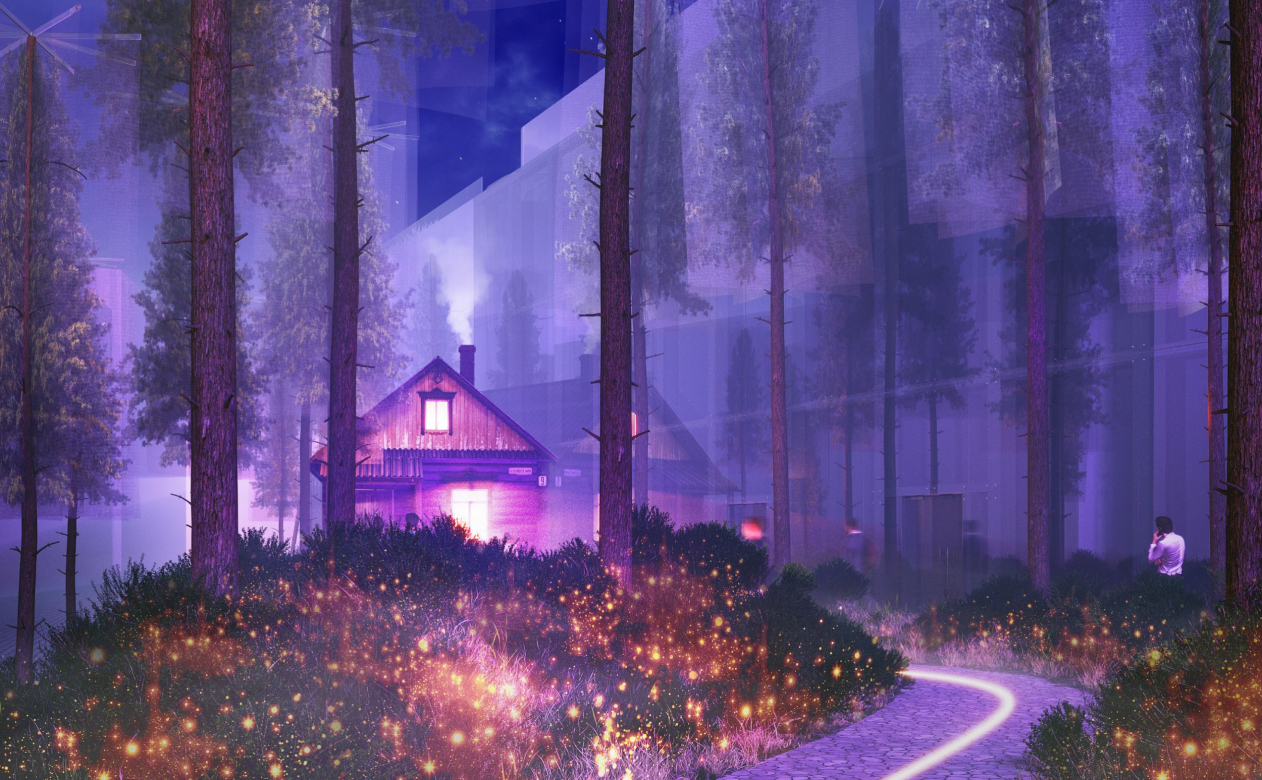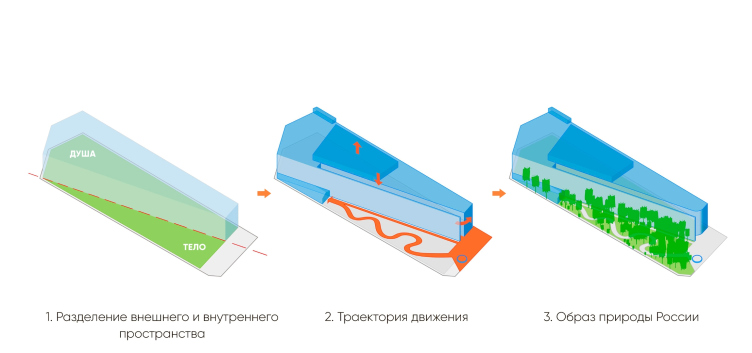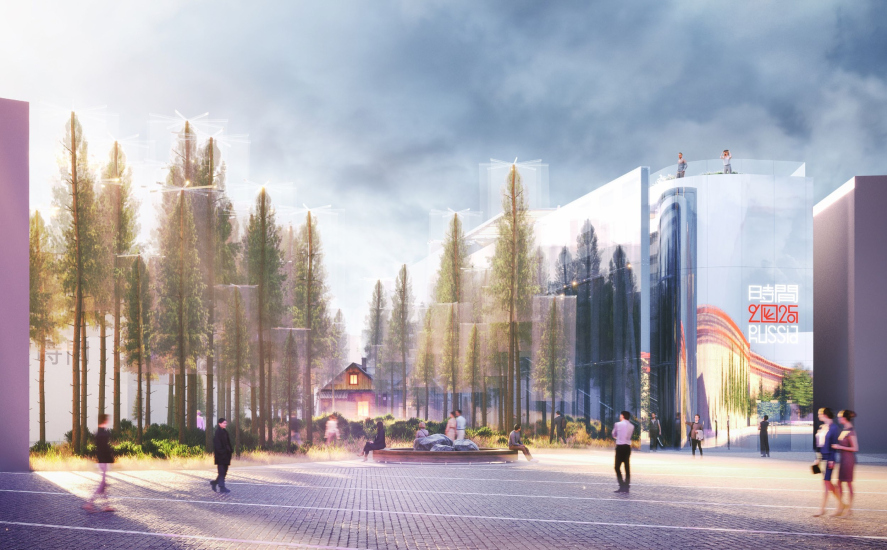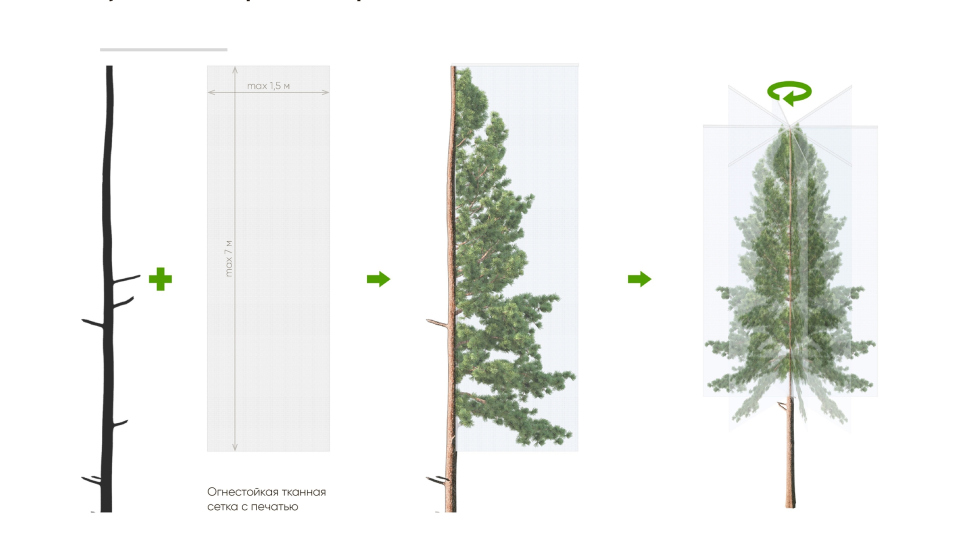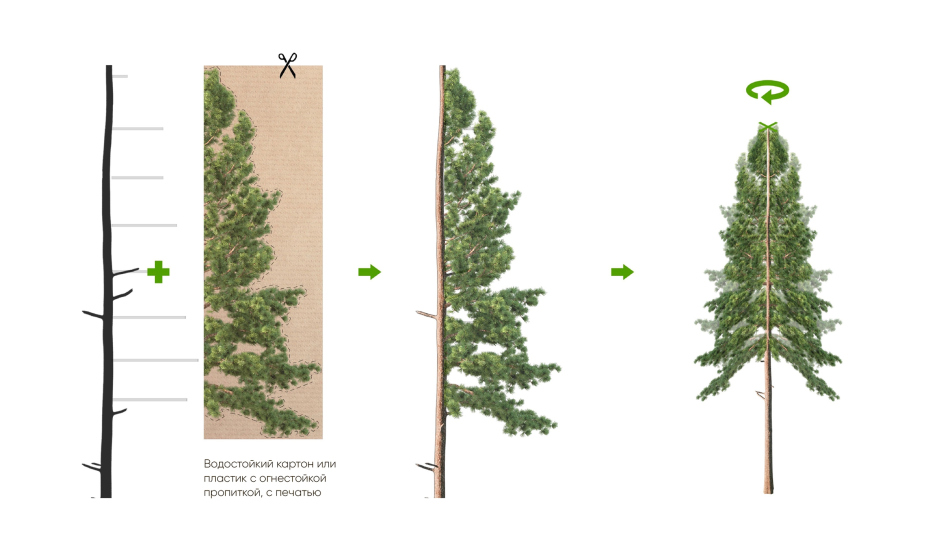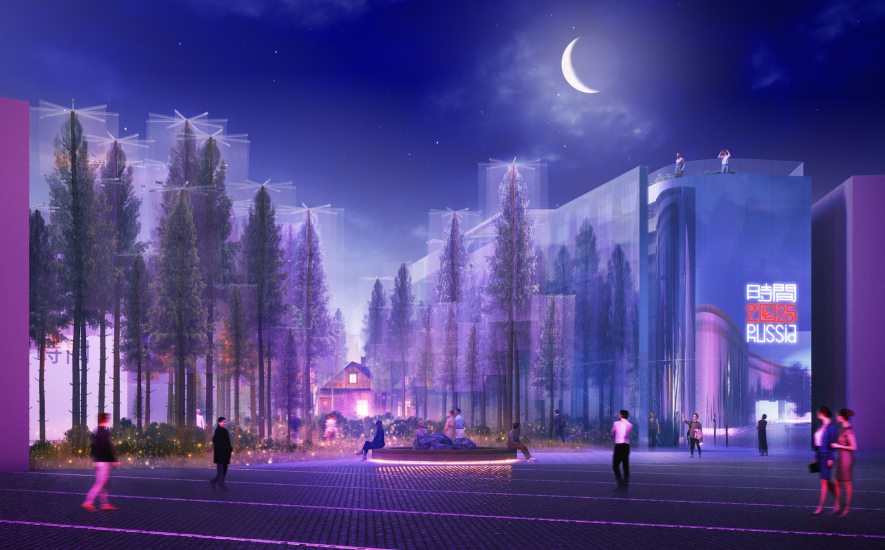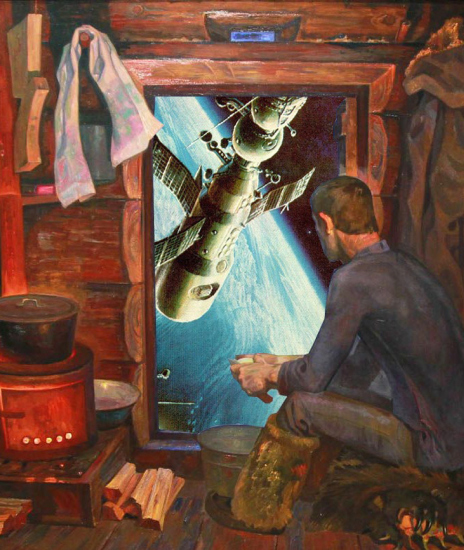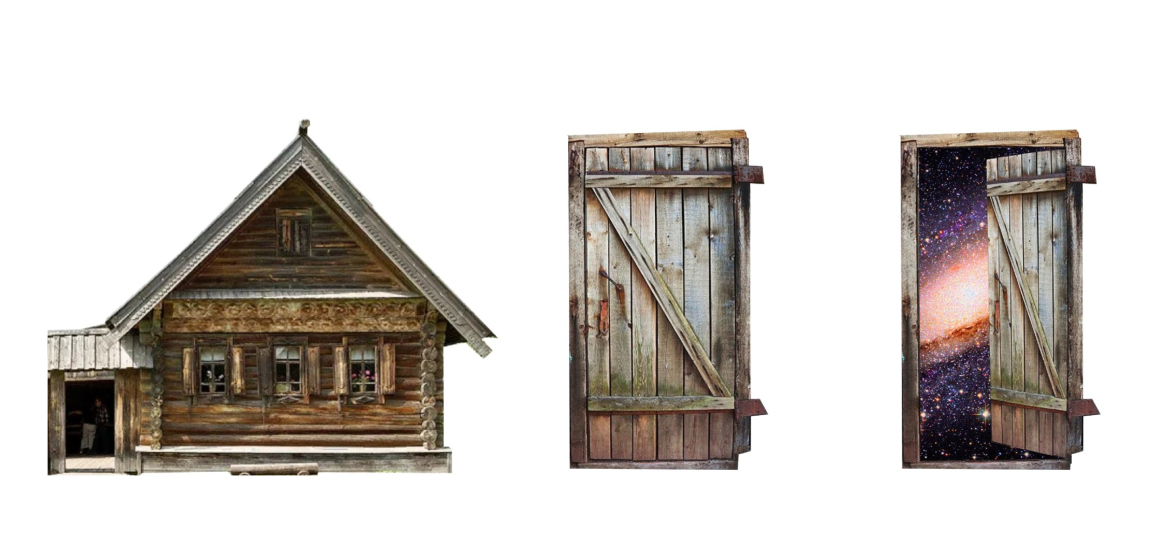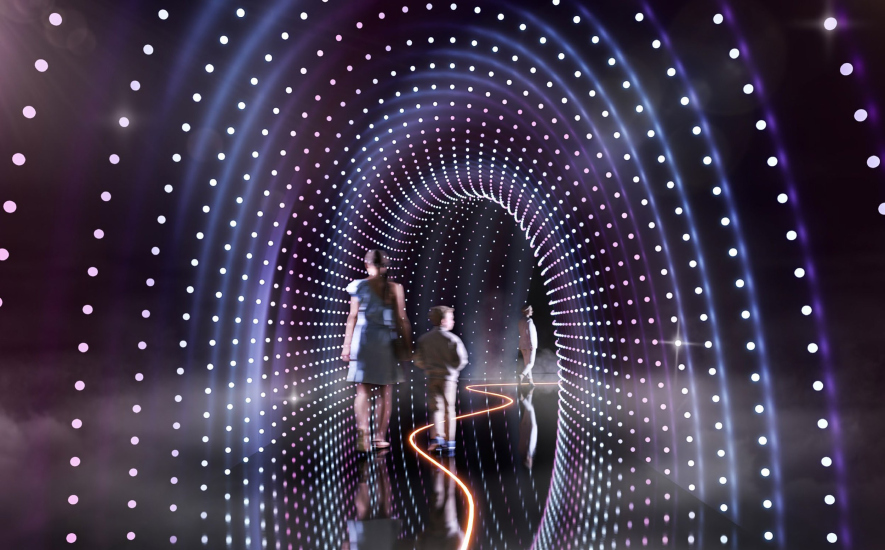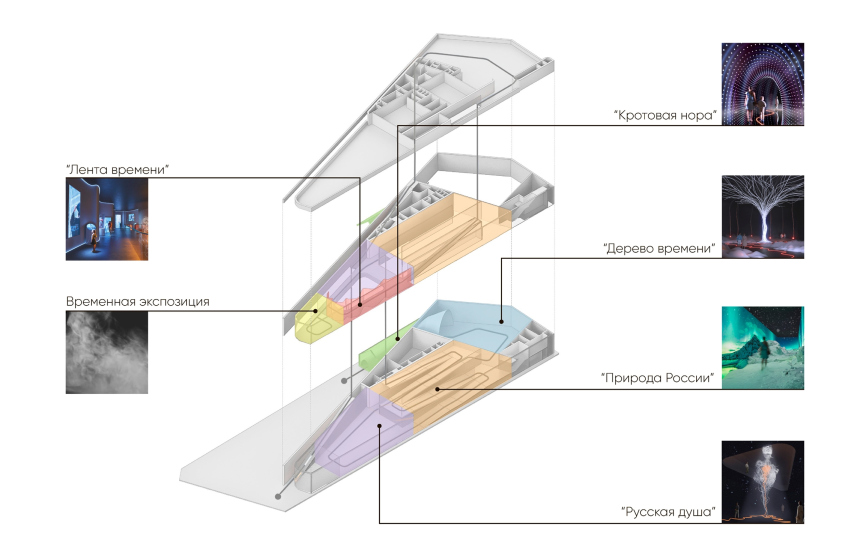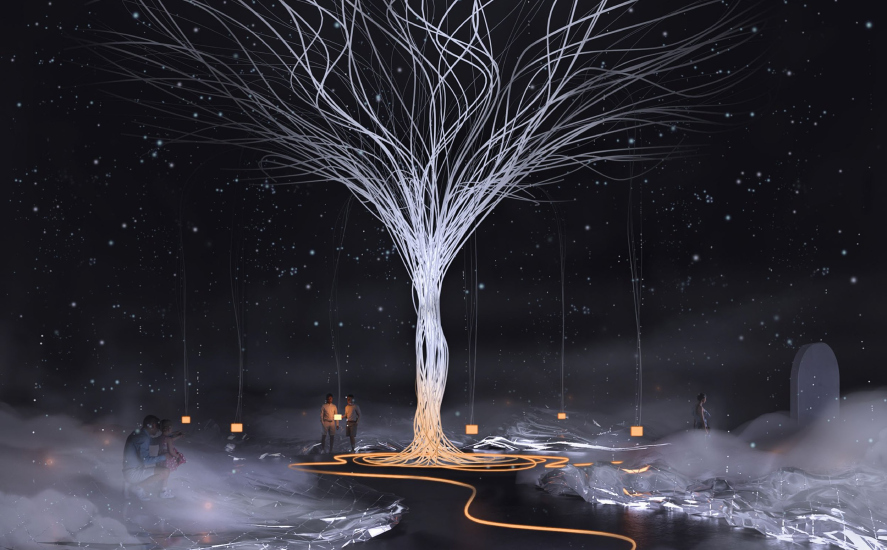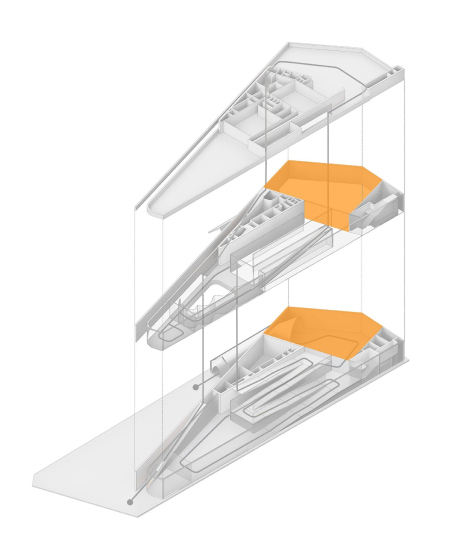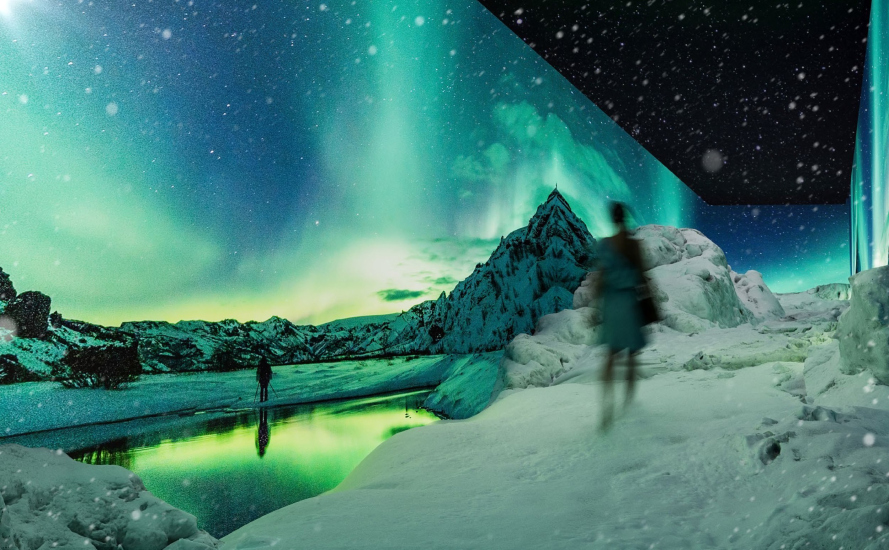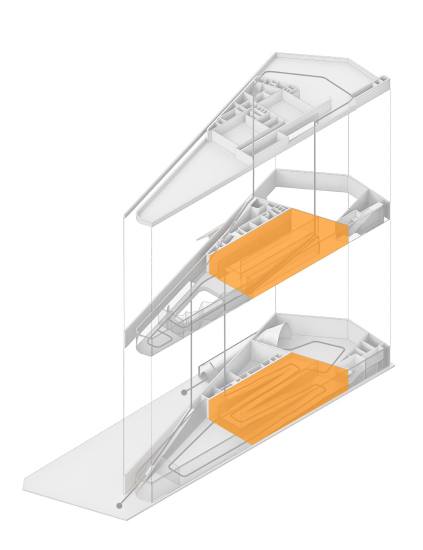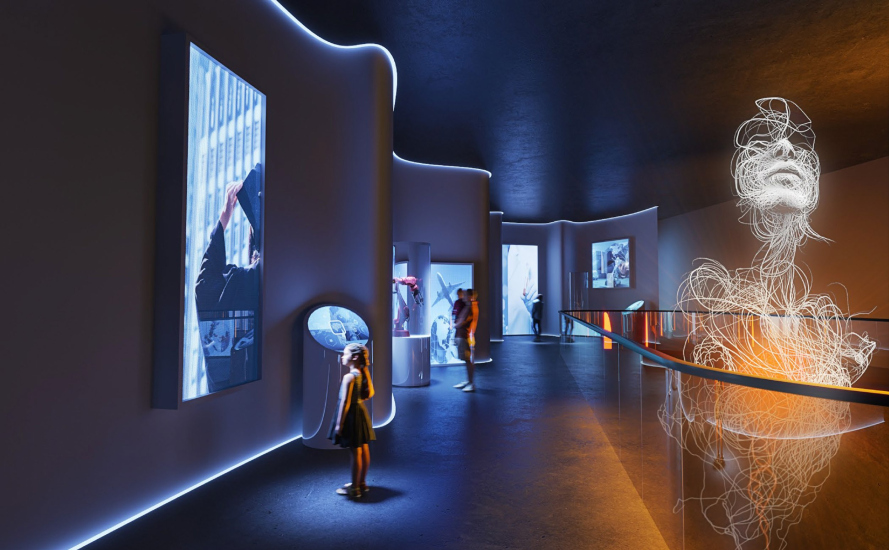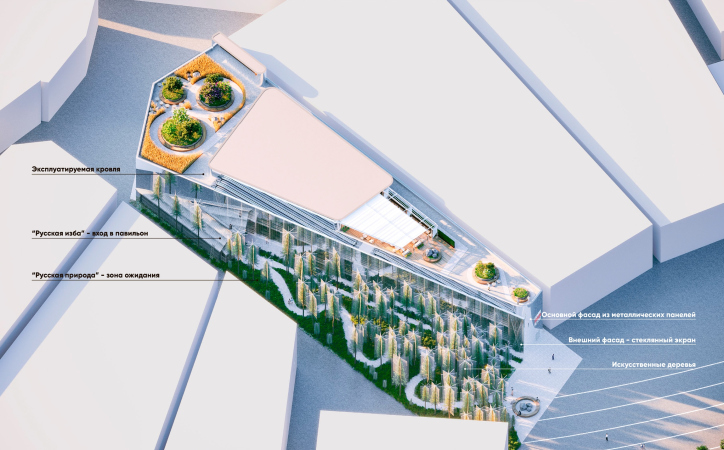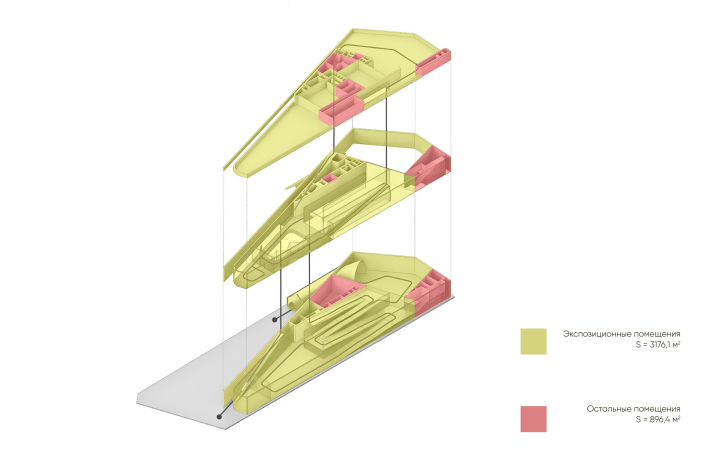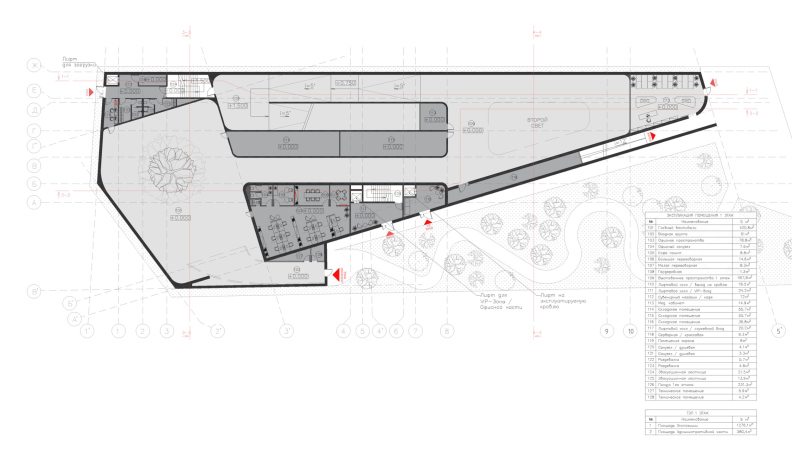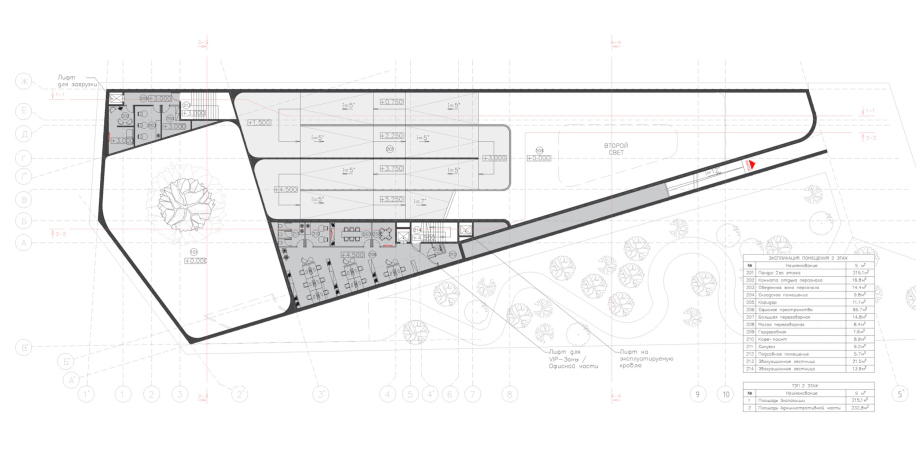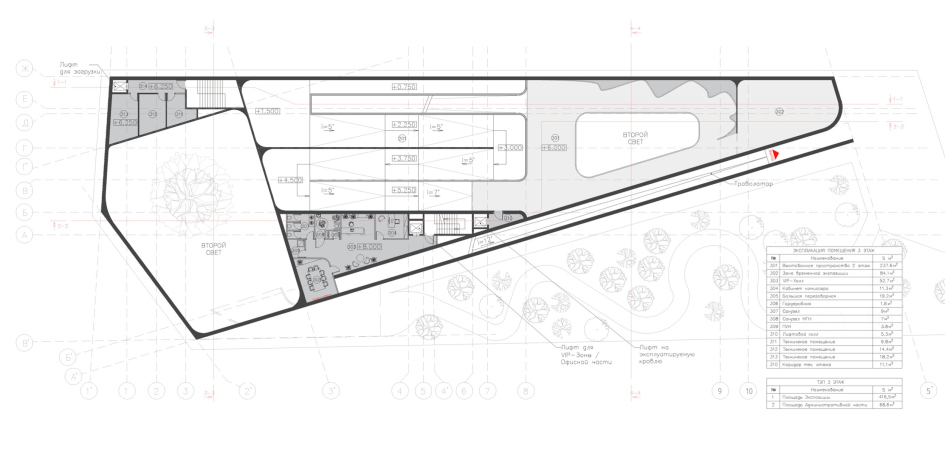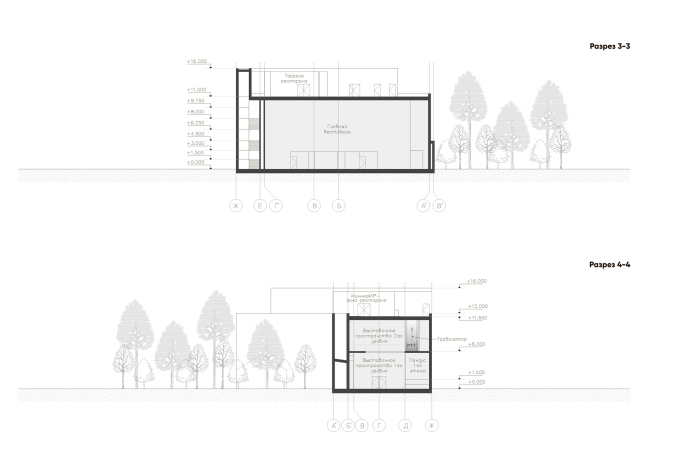The elongated rectangular plot of 92 x 31 meters is divided diagonally, almost exactly in half, leaving a larger area for the building and a smaller one for the wedge-shaped square, the traditional space for visitors to wait before entering the pavilion, typical for almost all EXPO events. This part is located on the left and is given to the forest, with the forest and the waiting area conceived as the “body”, while everything inside the pavilion is considered the “soul”. In addition, the forest represents the image of Russian nature, although nature is also represented inside the pavilion.
EXPO pavilion in Osaka. The Russian soul. The shapes
Copyright: © ASADOV Architects
EXPO pavilion in Osaka. The Russian soul. The functions
Copyright: © ASADOV Architects
Straight out: the forest is artificial; the architects proposed to print coniferous trees either on fabric structures or on canvases made of reinforced cardboard with a silhouette cutout. In both cases, the forest, as it is quite obvious, is not real but tall and large, very “camera-friendly”. Resembling sets for “A Midsummer Night’s Dream”, especially in the first version where the transparent base is preserved, this forest visibly reveals its artificial origin, and the eight-blade constructions of the “trees” divide the space quite regularly, multiplying in the reflection of the curved mirror facade of the pavilion building.
All the “underwood”, however, was planned to be alive, made of real plants.
At the end of the forest, where the perspective of the forest exonarthex converges, there stands a house resembling a traditional village one, somewhat idealized, or, rather, theatricalized – yet easily recognizable as the image of a forest log cabin.
The plot is based on contrast: according to the architects, the Russian soul, on one hand, is all about fields, boundless forest expanses, log cabins, and simple people – and on the other hand, is all about ideas of a completely futuristic nature, technology, and space. The architects illustrate their idea with a collage: in Vyacheslav Samarin’s painting “Naparnik” (“Partner”) (1979), where a taiga explorer enjoys a cup of tea in front of a samovar in a log cabin, the window commands not the view of a snowy forest, but a view of an orbital station, also borrowed from the Soviet science fiction artist Andrey Sokolov’s work “Another Soyuz Spaceship Is Docking”.
Thus, when we see cosmic expanses from the interior of a taiga hut, it is supposed to be the paradox of the Russian soul.
Meanwhile, the flickering corridor that was supposed to open right behind the façade of the Russian log cabin is almost a literal embodiment of the author’s idea of contradictions and contrasts – it is a “Mole Hole”, an image of a spatial/temporal leap, a hyper transition from science fiction. This is where the light line on the floor starts, guiding and accompanying the visitor through the entire exhibition.
Thus, it makes perfect sense that such a “disturbance in space-time fabric” leads the visitor to the hall with the Tree of Time. Here, it is composed of flexible glowing threads, surrounded by “snow drifts” of silvery thermal blankets swaying thanks to air currents. Under the metaphorical drifts of blankets are seats, the visitor sees “hills” of the artificial landscape. According to the brief, VR glasses with films about Russia’s achievements are suspended from the tree branches.
The next part of the exhibition, in the middle of the pavilion, is organized in a zigzag manner to provide maximum passage length. In total, there are five ramps here: the Arctic, taiga, steppe, subtropics, and desert. Media screens on the walls show the lives of people in different climatic environments of the country. The time of day changes from dawn to dusk, emphasizing the spectrum of the country’s time zones: visitors are invited to immerse themselves in the nature of Russia and get acquainted with its peoples through a fast-paced media exhibition. Something similar comes to mind from the UAE pavilion in Dubai 2020, where there were both sand dunes and the story of a girl living in the desert.
In this case, however, the task of immersion is to help understand the Russian soul.
After the ramps dedicated to nature, the visitor enters a two-tiered space with a sculpture representing the Russian soul. It is woven from a single thread issuing pulsating light, which in the upper tier forms volumetric contours of a female face.
Thus, the glowing thread coming from the tree made of media fibers leads us to another installation, symbolizing the Soul, the understanding of which is prepared by passing through the ramps with alternating different environments of existence of different Russian souls. I note that, according to the author’s description, the Tree at the entrance appears to be a sprout, but when the viewer comes closer to it, it grows – and we also do not see the Soul at once: at first, a the visitor only sees a tangle of some roots, and only by climbing to the second tier would they see the face of the Russian soul.
For movement inside, in addition to the ramps, a moving walkway or a staircase was planned.
The last hall is the Timeline, a wall combining several themes: innovations, medicine, hobbies, technologies, transport – with one media story in each curve.
Finally, a small hall before the exit is designed to host temporary exhibitions, and the roof in the project was planned to be usable, with a café terrace and a panoramic view of the EXPO.
Thus, ASADOV Architects paid a great deal of attention to the ideas outlined in the competition brief and devoted a lot of attention to the spirit of the exhibition itself, building it as a sequential succession of immersions into a string of decorations on the verge of installation and film screening, strung on a thread, from which “tangles” of two light-based sculptures are woven at key points.
The building itself is not so important in this case; it only helps to multiply the “forest” decorations of the prelude to the performance. The architects say that the soul is contained in it, and technically it is, since the sculpture is inside; but I think it would be more accurate to say that this building is more like a mirror of that soul.

